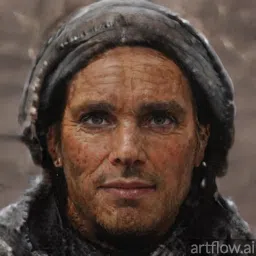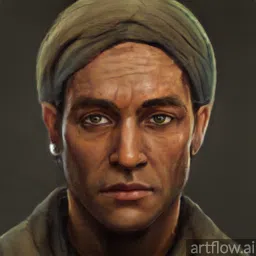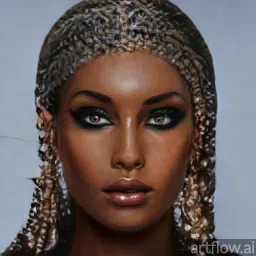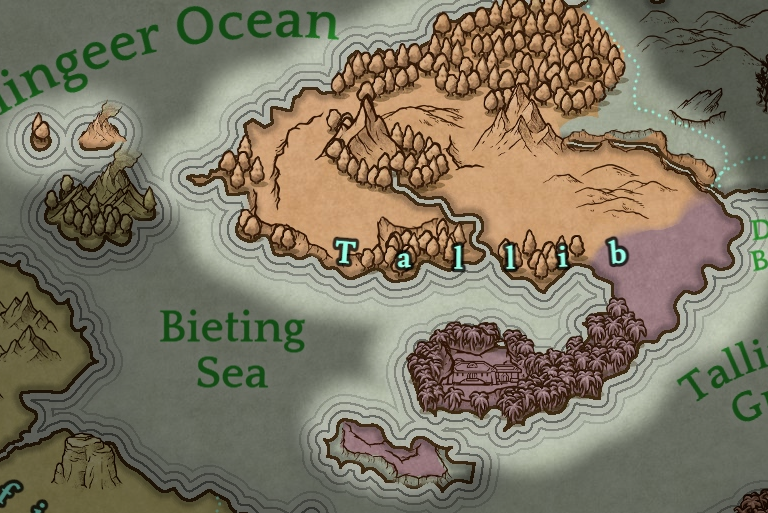Tallib
The Tallib hail from the country of Tallibab. There is an older paternal group or tribe called the Tallibites where the name derives. They are of moderate height and build. Between the three, their skin ranges from dark tan to fair, hair from black to light brown, and eyes varies.
Rule of Three
These people unify in sets of three's, three three's being most significant. This is called the "Rule of Three". The Tallib celebrate and revere three's and specifically three sets of three's, such as the third son of the third son, the third eclipse of the third eclipse, the third line of a song, and so on. Triangles are seen as holy and important to the Tallib. Even in their geography, the three elevation trifecta mountain-plateau-gorge is endemic to their culture.Fear of Two
The Tallib fear two's and pairs. Obviously they see no such "bad luck" with having two arms or legs or eyes, or two spouses. They relegate this superstition to an Evil serendipity. Say one were to go fishing. It would be bad luck to catch only two fish. Having only two separate children is not seen as an ill omen, but twins are. Two children are not shunned since the parents may have a third child. This superstition is rarely followed through with punitive actions from deities or Evil serendipity. To clear the curse, many try for a third. Having or attaining a third child or fish or lamb is a sign that the divine smile upon the family and clear their curse. Even a third fish is enough to clear the curse of twins. This leads to the phrase "went/going/to go Three" which means to either literally go for a third fish or attempt of some kind to clear the curse, or to try harder to attain a goal as the third attempt cures the curse.Loss of Two
This fear of two's is rooted in their history of loss. The Tallib see Tallifir's Arm as close cousins to themselves, and while they are on friendly terms, the Faithful show no signs of cooperation to a degree the Tallib wish. The Tallib, a religious and spiritual people, it is true, are seen as passive in prayer and piety and devoutness by the Faithful, as so are given friendly consolations. The Tallib also mourn the loss of their third country, the Damned Lands, whose old name is now lost to memory. Evil creatures conquered and settled there, hobgoblins, orcs, and Evil elves and humans, twisted and tainted by malevolent demons who openly prowl the innermost reaches. The Damned Lands are said to be spreading slowly every year and soon many people in the north will abandon their homes to its gluttonous thirst for land. The Tallib believe it a lofty yet desirable goal to unite them, if only somehow these lands could be unified.Peoples
Three of a Kind
Tallib can be generalized in culture and appearance of Northern Tallib, called Swasham, Southern Tallib, called Dnynoko, and the Canyon Tallib, called Kiriq. Unlike the Gleymorians and Lochesians of Lochish, these peoples are not hostile towards each other. They often make polite jabs at "quirky outlandishness" but they are far from enemies. Indeed, many times they have united in defense or famine, especially when hordes from Damned Lands come into Kiriq's Canyon or the Northlen. All three are part of the Tallibabbite Quali and have representatives that meet at Shoeto Rock in the South.Swasham
The northern Tallib are generally lighter of skin with olive tones, resides in the woods and cooler north, and in the mountains. They trade the Dnynoko for spices to keep themselves warm during the long, cold months. Swasham sometimes wear furs and use pelts to insulate, but they much prefer layers scarves made from either coarse linen or wool from their sheep they herd. These scarves vary in thickness depending if they are traveling to the warm South or staying in the cooler North.
Dnynoko
Opposite of their northern cousins, the Dnynoko prefer airy clothing of loose robes. They are tawny to dark tan, also with olive tones. Those with hair prefer to keep it up in head scarves, echoing the Swasham. When traveling north or up the mountains, they wear furs over their robes, a thing they see as a necessary inconvenience. The Dnynoko, it is said, are nothing without their robes. Indeed, so much personality is veritably wrapped up in the robes that losing them is considered a sort of death. Even the lowliest beggars keep their robes as immaculate as possible, and Dnynoko thieves daren't steal the robes or clothes of their victims.
Kiriq
The Kiriq enjoy the lush floor of the Kiriqo canyon. They refined their agricultural skills over the centuries of inhabiting the canyon. Their crop harvest is always bountiful. They are darkest of skin among the Tallib and have eyes from light to dark. Instead of the scarves covering their heads they keep their signature scarves around their shoulders. Typically, men wear them on their chests, waist, hips, or legs, and women on their head, shoulders, or chest. Thin cloth is their preference, but they ornament their clothes with traded jewelry and gems. How the Dnynoko take pride in their robes, the Kiriq take pride in their scarves, with color and patterns being their signifiers and banners.







Comments